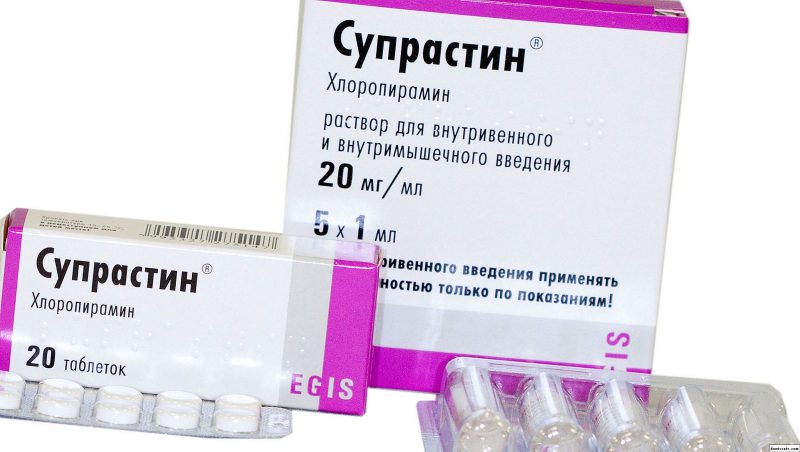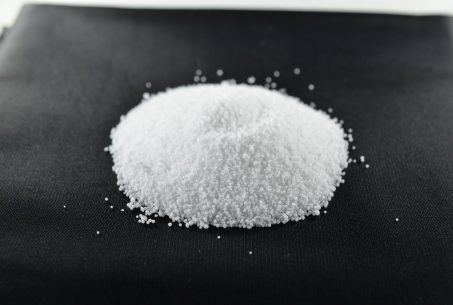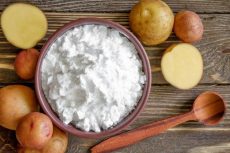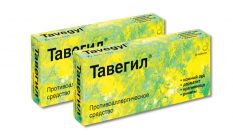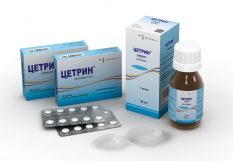Allergy is truly a disease of our time, insidious in that it is impossible to get rid of it, you can only learn how to live, avoiding allergens and muffling symptoms if contact with them is inevitable. Suprastin is one of the most prescribed anti-allergic drugs. How to take Suprastin, observing the dosage, in which cases it is indicated, and in which it is contraindicated?
Material Content:
Description of the release form, composition of the tablets
Suprastin tablets for allergies are prescribed to patients of different age categories: both adults and children. The active active ingredient of the drug is chloropyramine. This component belongs to the blockers of H1-histamine receptors (first generation) and is vital in the Russian list of medicines.
In addition to chloropyramine at a concentration of 25 mg, each Suprastin tablet contains form-forming additional substances: stearic acid, lactose monohydrate, starch, talc and others.
The tablets are white, odorless. Ten pieces are packaged in a blister pack, packed in a cardboard bundle of 2 blisters and equipped with instructions for use.
Pharmacological properties and indications for use
Antihistamines are aimed at eliminating or preventing allergic symptoms. How does an allergy manifest itself?
In the body of every person there is a special organic substance - histamine. Under normal conditions, it is inactive.When a person comes into contact with allergens, the immune system perceives them as foreign substances and activates the release of histamine to fight “strangers”. And absolutely any substances can act as allergens - food components, medicines, household chemicals, plant pollen, dust, substances in the saliva of blood-sucking insects, and much more. Susceptibility to allergens is individual and almost unpredictable in every person.
Chloropyramine in the composition of Suprastin helps prevent the development of allergic reactions, and if the release of histamine has already begun, then when the drug is taken, its further release is blocked.
Thus, various symptoms of allergic genesis serve as indications for the use of Suprastin:
- vasomotor and allergic rhinitis (not viral and bacterial!);
- conjunctivitis;
- dermatitis;
- eczema;
- hives;
- sneezing
- itching and others.
In addition to blocking the activity of histamine receptors, Suprastin also has other properties: acting on the central nervous system, it has a sedative effect, which makes it easier to tolerate allergic reactions and shocks.
The effect of chloropyramine is manifested within a few minutes (10-20) after taking Suprastin, the maximum concentration in the body is reached in an hour, the action lasts up to 6 hours. The drug is metabolized in the liver, excreted by the kidneys. In severe cases of allergies, treatment is prescribed with intravenous administration of Suprastin (using ampoules, another form of drug release), then they switch to oral administration.
Instructions for use Suprastin for adults and children
Suprastin should be taken, strictly following the dosage instructions provided in the instructions or prescribed by your doctor! It does not make any fundamental difference before or after a drug is taken - the therapeutic effect is manifested regardless of whether. However, for maximum effect, manufacturers recommend consuming Suprastin with food.
It should be borne in mind that tablets Suprastinum children are prescribed only from the age of three! At the same time, there is no “children's” form of release with a reduced concentration of the active component. This is important to remember when calculating the dosage for small allergy sufferers.
Adults are prescribed a pill up to 4 times a day.
For children under 14 years old - half a tablet per dose:
- from 3 to 6 years - twice a day;
- from 6 to 14 years - three times a day.
The maximum dosage in cases of changes in the prescribed concentration of chloropyramine should not exceed 2 mg of substance per kg of patient body weight per day. The duration of treatment is determined by the doctor. However, it is not recommended to take antihistamines for longer than 7 days continuously. Otherwise, the risk of addiction increases or the drug itself becomes a source of allergies.
During pregnancy and lactation
Suprastin therapy is not recommended during breastfeeding and during pregnancy. However, in special cases, this issue can be solved individually if the potential benefit to the mother's body is higher than the risk to the baby. Instructions for use do not give precise instructions on the dosage of the drug in this case.
Drug interaction
Chloropyramine has a pronounced sedative effect, which should be considered when combined with Suprastin and drugs of a similar group. You can not use the drug instead of sleeping pills! Although it is better to sleep with antihistamines, they should be consumed strictly according to indications!
Doctors often prescribe antihistamines with antibiotics. This is allegedly due to a decrease in the negative impact of the latter on the body. However, Suprastin reduces the activity of antibiotics, and also muffles the symptoms of allergies, if it suddenly manifests itself on the drug.
Alcohol enhances the effect of chloropyramine on the central nervous system, which can lead to unpredictable consequences.
Contraindications, side effects and overdose
Despite the fact that Suprastin tablets are subject to over-the-counter dispensing from pharmacies, it cannot be attributed to safe drugs.
There are a number of contraindications for use:
- glaucoma;
- gastrointestinal ulcer;
- children's age less than three years (for tablets);
- prostatitis;
- diseases characterized by respiratory distress;
- individual component intolerance to Suprastin.
Adverse reactions when taking the drug are specific for antihistamine group drugs from different body systems: severe drowsiness, overexcitation, tremor of the extremities, euphoria (from the central nervous system), nausea, digestive and stool disorders, dry mouth, appetite (from the gastrointestinal tract) , tachycardia, hypotension, changes in blood composition (from the cardiovascular system and blood formation), increased eye pressure, difficulty urinating, and others.
In case of an overdose of Suprastin, side effects, such as symptoms of poisoning, convulsions, coma, are possible in isolation or in the aggregate. Treatment in this case is carried out according to the indications: detoxification (gastric lavage and sorbent intake), symptomatic, in severe cases - resuscitation.
Allergy drug analogues
In composition, the absolute analogue of Suprastin can be called: Chloropyramine hydrochloride, Allergosan.
Similar to the mechanism of action on histamine receptors are drugs:
- Tavegil with the active substance clemastine;
- Cetrin with the active ingredient cetirizine;
- Telfast or Fexodine with Fexophenodine;
- Suprastinex or Zodak with levocetirizine;
- loratodyne-containing preparations: Loratodin, Claritin, Lorahexal and others.
The appointment of the drug should only be done by a specialist, based on the diagnosis and clinical manifestations of diseases and their allergic complications. Self-medication is unacceptable and can lead to a worsening of the condition and the manifestation of complications.


